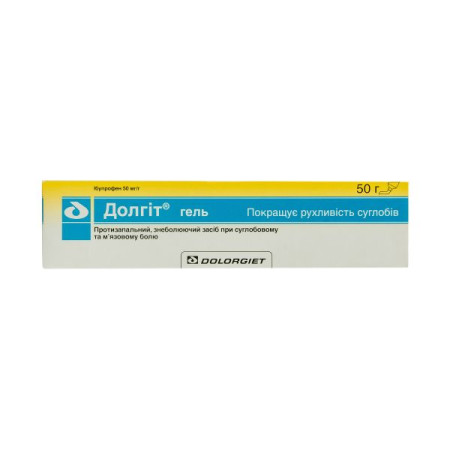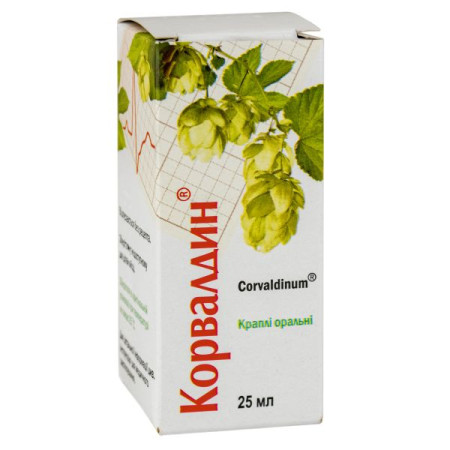Tempalgin film-coated tablets No. 20

Instructions Tempalgin film-coated tablets No. 20
Composition
active ingredients: metamizole sodium monohydrate, tempidone (triacetonamine-4-toluenesulfonate);
1 film-coated tablet contains: metamizole sodium monohydrate 500 mg, tempidone (triacetonamine-4-toluenesulfonate) 20 mg;
excipients: wheat starch, microcrystalline cellulose (type 101), povidone K 25, talc, magnesium stearate;
film coating: Opadry II 85 F21526 green (partially hydrolyzed polyvinyl alcohol, macrogol 3350, talc, titanium dioxide (E 171), quinoline yellow (E 104), diamond blue FCF (E 133)).
Dosage form
Film-coated tablets.
Main physicochemical properties: round biconvex, film-coated tablets, 13 mm in diameter, green in color, odorless.
Pharmacotherapeutic group
Analgesics. Pyrazolones. Metamizole sodium, combinations with psycholeptics.
ATX code N02B B72.
Pharmacological properties
Pharmacodynamics
Metamizole sodium has analgesic and anti-inflammatory effects. It inhibits the synthesis of prostaglandins by inhibiting cyclooxygenase, has a membrane-stabilizing effect, and inhibits the formation of endogenous pyrogens.
Tempidon has a pronounced anxiolytic activity and eliminates the state of anxiety, fear and tension. Reduces motor excitability, exhibits central N-cholinolytic action. Enhances and prolongs the analgesic effect of metamizole. Tempidon has a beneficial effect on the emotional component of pain.
The combination of metamizole sodium and tempidone enhances the analgesic effect of metamizole and increases the duration of its action.
Pharmacokinetics
Absorption: After oral administration, metamizole is hydrolyzed in the gastrointestinal tract. The active metabolites are 4-methyl-aminoantipyrine (MAA) and
4-aminoantipyrine (AA). MAA is characterized by rapid and complete resorption. The maximum concentration in blood plasma is reached within 1-2 hours. The bioavailability of MAA is about 90%. Food does not affect the pharmacokinetics of metamizole.
Tempidon is absorbed in the upper gastrointestinal tract. Therapeutic plasma concentrations are reached 30 minutes after administration.
The maximum plasma concentration of 0.8 μg/ml is reached within 60 minutes.
Distribution: metamizole sodium partially binds to blood plasma proteins.
Data obtained in experimental animal studies show that the distribution of tempidone in tissues is significant.
Metabolism: Metamizole sodium undergoes intensive metabolism in the liver. Its main metabolites 4-methyl-aminoantipyrine and 4-aminoantipyrine are pharmacologically active.
Excretion: Excreted in the urine as metabolites, with only 3% of the excreted amount of metamizole being unchanged. Metamizole metabolites penetrate into breast milk.
Tempidon is excreted in the urine unchanged, in an amount of 2/3 of the applied dose.
Patients with impaired liver function: the half-life of the active metabolite MAA is approximately 3-fold prolonged in patients with impaired liver function. Treatment with lower doses of metamizole is recommended in such patients.
Patients with renal impairment: In patients with renal impairment, the excretion of some metabolites is reduced. In such patients, treatment with lower doses of metamizole is recommended.
Indication
For short-term symptomatic treatment of mild to moderate pain syndrome in the following conditions: headache, toothache and dental procedures, myalgia, neuralgia, arthralgia.
Contraindication
- Hypersensitivity to active or excipients;
- hypersensitivity to other pyrazolone derivatives;
- acute hepatic porphyria;
- congenital deficiency of glucose-6-phosphate dehydrogenase (threat of hemolysis);
- severe kidney and/or liver disease;
- impaired bone marrow function (for example, after treatment with cytostatics);
- diseases of the blood system (aplastic anemia, leukopenia and agranulocytosis), changes in the peripheral blood composition;
- anemia of any etiology, cytostatic or infectious neutropenia;
- arterial hypotension with blood pressure values below 100 mm Hg;
- suspicion of acute surgical pathology.
Interaction with other medicinal products and other types of interactions
The effect of tricyclic antidepressants (psychophorine, amitriptyline), oral contraceptives, analgesics, allopurinol, and alcohol is potentiated when used simultaneously with the drug Tempalgin®.
Concomitant use with other analgesics and NSAIDs increases the risk of hypersensitivity reactions and other adverse reactions.
Barbiturates, glutethimide and phenylbutazone reduce the strength and shorten the duration of the pharmacodynamic effects of metamizole due to the induction of liver enzymes.
Metamizole reduces the activity of coumarin anticoagulants when used simultaneously due to induction of liver enzymes.
The analgesic effect of the drug is enhanced by sedatives and tranquilizers (sibazon, trioxazine, valocordin, codeine, etc.).
Metamizole reduces the concentration of cyclosporine in blood plasma.
Cytostatics (sacrolysin, methotrexate), gold preparations, mercazolil (thiamazole), chloramphenicol and other drugs that inhibit hematopoiesis enhance the myelotoxic effect of metamizole.
Caution is required when used concomitantly with diuretics (furosemide).
Radiocontrast agents, colloidal blood substitutes and penicillin should not be used during treatment with metamizole sodium.
Tempidon potentiates the sedative effect of hypnotics, general anesthetics, and narcotic and non-narcotic analgesics.
Sulfonamide oral hypoglycemic drugs may enhance their hypoglycemic effect when used with NSAIDs, including metamizole sodium.
Application features
Treatment with the drug Tempalgin® (due to the content of metamizole) is prescribed only for a short period, when there is no other alternative treatment method.
Before starting treatment, patients should be warned that if bleeding gums, pale skin, asthenia, or rashes appear on the skin and mucous membranes, the drug should be discontinued and a doctor should be consulted immediately.
During prolonged treatment with Tempalgin®, it is necessary to monitor the blood picture, including the leukocyte formula, due to the increased risk of agranulocytosis.
Do not exceed the recommended doses of the drug. Since metamizole has anti-inflammatory and analgesic properties, it can mask signs of infection, symptoms of non-infectious diseases and complications with pain syndrome, which can complicate their diagnosis.
Use in children should be carried out under constant medical supervision. It is necessary to monitor the qualitative and quantitative composition of peripheral blood.
It should be used with caution in patients with allergic diseases, patients with hypersensitivity to analgesic and antirheumatic drugs (analgesic intolerance) and to other drugs or foods, due to an increased risk of allergic reactions and asthma attacks.
It should be used with caution in patients:
- old age - may lead to an increased frequency of adverse reactions, especially from the digestive tract;
- with impaired kidney function, with a history of kidney disease (pyelonephritis, glomerulonephritis);
- with inflammatory bowel diseases, including non-specific ulcerative colitis and Crohn's disease;
- with cardiovascular insufficiency;
- with chronic alcoholism.
Metamizole can provoke hypotensive reactions. Treatment with Tempalgin® should be carried out with special caution in patients with hypotension, volume depletion or dehydration, unstable blood circulation.
When used simultaneously with alcohol, the risk of side effects increases.
It should be used with caution in patients with moderate hepatic impairment or renal impairment.
When taking the drug, urine may turn red due to the excretion of the metabolite metamizole sodium.
Do not use the drug for longer than the prescribed period without consulting a doctor! If the signs of the disease do not disappear or, on the contrary, the state of health worsens, or undesirable phenomena appear, it is necessary to stop taking the drug and consult a doctor regarding further use.
The wheat starch included in the preparation may contain only minor traces of gluten and is considered safe for people with celiac disease.
Do not exceed the recommended doses of the drug. Use in children should be under the constant supervision of a physician.
Ability to influence reaction speed when driving vehicles or other mechanisms
Tempalgin reduces the ability to concentrate and slows down conditioned reflexes, so it should not be prescribed to drivers of vehicles and persons whose work requires a high speed of mental and physical reactions.
Use during pregnancy or breastfeeding
Pregnancy.
Controlled clinical studies in pregnant women have not been conducted, and there are no observational data on the use of the drug in this group. Despite the fact that metamizole is a weak inhibitor of prostaglandin synthesis, there is a possibility of premature closure of the Botal duct and perinatal complications due to reduced platelet aggregation in the fetus and mother. Treatment with the drug is contraindicated in pregnant women.
Breast-feeding.
Metabolites of metamizole penetrate into breast milk. If treatment with Tempalgin is necessary, breastfeeding should be discontinued.
Method of administration and doses
Tablets should be taken orally with water, preferably after meals.
The course of treatment should not exceed 3 days. Use for a longer period of time or in higher doses is possible only after consultation with a doctor.
The dose depends on the severity of the pain and individual sensitivity to the drug.
Adults.
The usual dose is 1 tablet 1-2 times a day, depending on the severity of clinical symptoms. The maximum single dose should not exceed 1 tablet. The maximum daily dose is 2 tablets.
For dental procedures, take 1 tablet 30 minutes before the procedure.
Children aged 15 and over.
1 tablet per day. Maximum daily dose is 1 tablet.
Usually, no dose reduction is required. In patients with age-related renal and hepatic impairment, treatment with the drug should be short-term. The maximum daily dose should not exceed 2 tablets.
Patients with liver dysfunction.
In such patients, the half-life of metamizole metabolites may increase. In patients with moderate or severe liver damage, treatment with ½ the recommended adult dose is recommended (maximum daily dose is 1 tablet).
Patients with impaired renal function.
Metamizole and its metabolites are excreted by the kidneys. In patients with impaired renal function, treatment with Tempalgin should be carried out using ½ of the recommended dose for adults (maximum daily dose - 1 tablet).
Children
Do not use in children under 15 years of age.
Overdose
Symptoms:
- gastrointestinal syndrome (nausea, vomiting, stomach pain, when used in large doses - hematemesis and melena);
- cerebral syndrome (Menieres-like phenomena, tinnitus, weakness, ataxia, drowsiness, apnea, impaired consciousness, delirium, coma with arterial hypotension and tonic-clonic convulsions);
- hematological syndrome (agranulocytosis, aplastic anemia or hemolytic anemia, hemorrhagic diathesis);
- metabolic syndrome (metabolic alkalosis);
- renal syndrome (from oliguria to anuria);
- acute liver and kidney failure;
- toxicosis-allergic syndrome (bullous-urticarial and petechial, sometimes crust-like or typhoid rashes; some patients may develop toxicoallergic shock);
- hypothermia, palpitations, pronounced decrease in blood pressure, tachycardia, dysphagia, shortness of breath, gastralgia/gastritis, paralysis of the respiratory muscles.
At the first symptoms of overdose, you should immediately seek medical help!
Treatment: symptomatic treatment is carried out - gastric lavage, monitoring of respiratory and cardiac functions, fluid administration, forced diuresis, and if necessary - hemodialysis.
Adverse reactions
When using the drug Tempalgin, side effects are possible, which are more often caused by metamizole sodium.
Adverse reactions are classified by organ and system.
From the blood and lymphatic system: agranulocytosis, leukopenia, aplastic anemia, thrombocytopenia, hemolytic anemia. The risk of agranulocytosis cannot be predicted. Agranulocytosis may also occur in patients who have used metamizole in the past without side effects. The risk of agranulocytosis increases with prolonged use of metamizole (more than 1 week).
Immune system: fixed drug exanthema, maculopapular rash, anaphylactic or anaphylactoid reactions. Milder effects are manifested by typical reactions from the skin and mucous membranes - itching, burning, redness, urticaria, edema (generalized or local), dyspnea and rarely - gastrointestinal complaints. Such milder reactions can progress to more severe forms with generalized urticaria, severe angioedema (including laryngeal), severe bronchospasm, cardiac arrhythmias, decreased blood pressure (sometimes with a previous increase in blood pressure), asthmatic attack (in patients with aspirin asthma), Stevens-Johnson and Lyell syndrome, circulatory shock.
Metabolism and nutrition disorders: decreased appetite.
From the nervous system: headache, dizziness.
Cardiovascular system: palpitations, tachycardia, cyanosis, hypotension.
Gastrointestinal: nausea, vomiting, abdominal pain and discomfort; in rare cases - ulceration and bleeding.
On the part of the hepatobiliary system: increased levels of liver enzymes (ASAT, ALAT), cholestasis, hyperbilirubinemia.
From the kidneys and urinary tract: polyuria, oliguria, anuria, proteinuria, interstitial nephritis. When using high doses - impaired renal function.
Expiration date
4 years.
Storage conditions
Keep out of reach of children.
Store in the original packaging at a temperature not exceeding 25 °C.
Packaging
10 film-coated tablets in a blister of PVC film and aluminum foil. 2 blisters in a cardboard pack.
Vacation category
Without a prescription.
Producer
JSC "Sopharma".
JSC "VITAMINS".
Location of the manufacturer and its business address
JSC "Sopharma": 16, Ilienskoe Shose St., Sofia, 1220, Bulgaria.
JSC "VITAMINS": Ukraine, 20300, Cherkasy region, Uman city, Uspenska st., 31.
There are no reviews for this product.
There are no reviews for this product, be the first to leave your review.
No questions about this product, be the first and ask your question.








